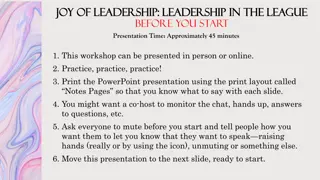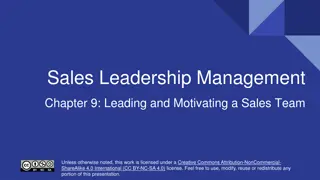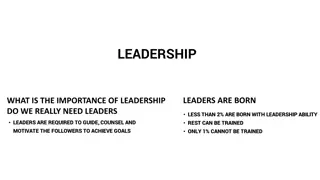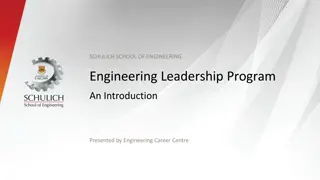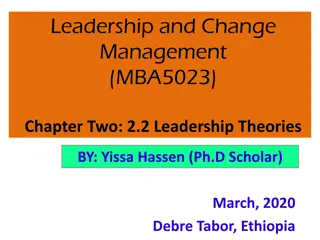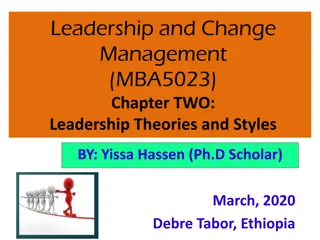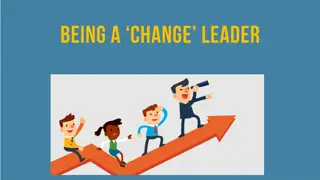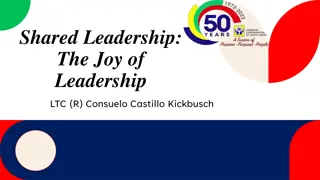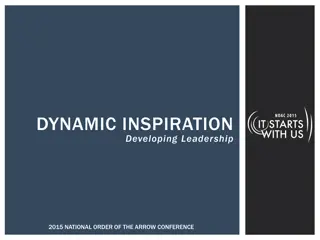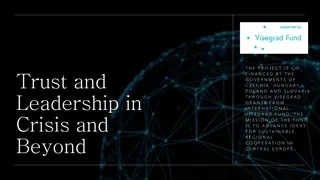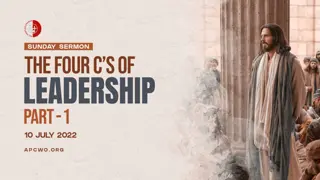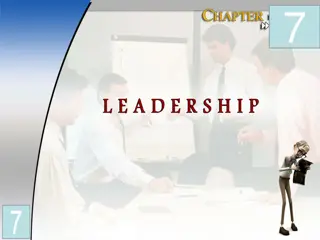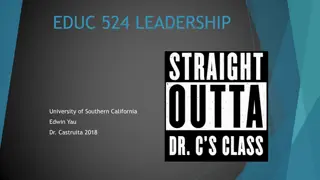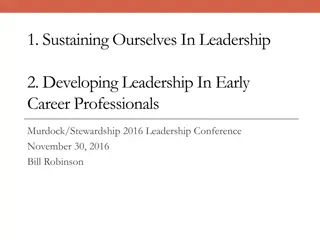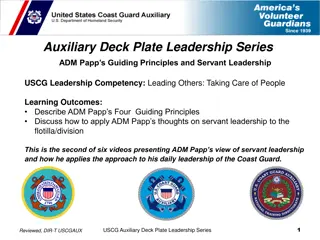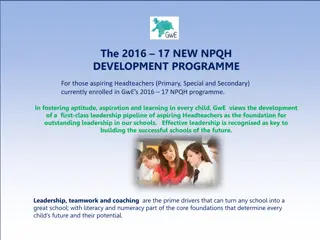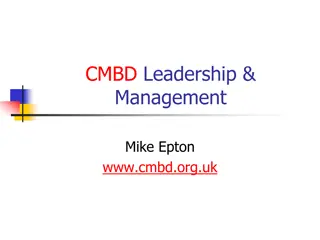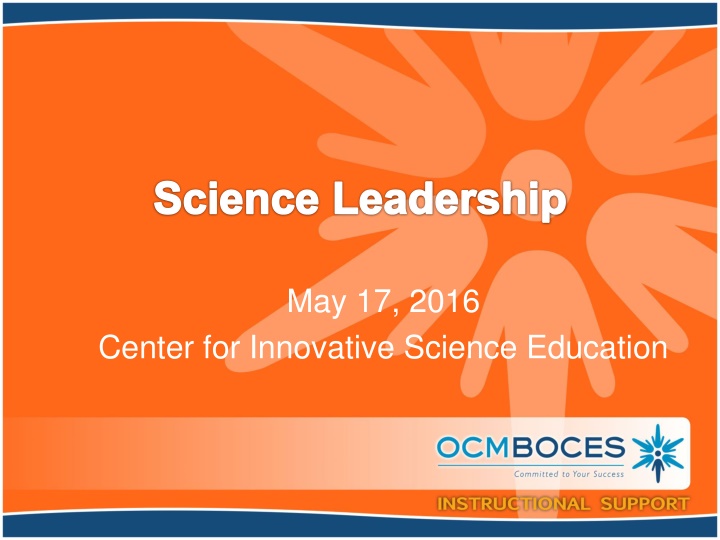
Science Leadership and Innovation in Education
Explore the latest updates in science education leadership, including grants, conferences, and plans for the future. Learn about successful initiatives and upcoming events in the field of science education. Join teaching teams for engaging lessons and be part of regional science conferences. Stay informed and involved in advancing science education.
Download Presentation

Please find below an Image/Link to download the presentation.
The content on the website is provided AS IS for your information and personal use only. It may not be sold, licensed, or shared on other websites without obtaining consent from the author. If you encounter any issues during the download, it is possible that the publisher has removed the file from their server.
You are allowed to download the files provided on this website for personal or commercial use, subject to the condition that they are used lawfully. All files are the property of their respective owners.
The content on the website is provided AS IS for your information and personal use only. It may not be sold, licensed, or shared on other websites without obtaining consent from the author.
E N D
Presentation Transcript
Science Leadership May 17, 2016 Center for Innovative Science Education
Plan for morning Help yourself to food and coffee 100Kin10 Grant NYSSLS Update Nov. 8thScience Conference Finishing the Framework Where are we and where do we want to go? Science Center Plans for the future
Introductions Introduce yourself and share a success in science from this year.
100Kin10 Grant Dr. Carol O Donnell Focus on K-2 Teachers Goal is to recruit 50 in the first year PD end of Nov. or Dec. 2016 Implement units Jan. Feb. 2016 Intermediate PD in 2017 (focus on lesson study) Build regional capacity to expand
NYSSLS Survey indicated strong support for draft NYSSLS State Science Steering Committee provided feedback to SED based on survey SED trying to get standards to BOR by the end of June
Regional Science Conference Nov. 8th8:00 3:15 4 Live Research Lessons Three Keynotes by national experts Dr. Carol O Donnell (Smithsonian Science Education Center) Dr. Carla Zembal-Saul (Penn State University) Tricia Shelton (Science teacher, NGSS implementation team, featured on NGSS videos) Supported by various teacher centers: CNY Oswego County West Genesee/SU JD/SU SCSD
Recruitment of Teaching Teams Looking for 4 teams of 3-5 teachers and/or administrator who will: engage in lesson study to prepare and teach an open research lesson at the conference; prepare a lesson introduction, a research proposal, discuss the live lesson with observers, and have one member participate in a panel discussion; work with conference coordinators to recruit students from your school to participate in the live research lessons (two groups); attend a 2-day summer workshop on either July 18 & 19 or August 15 & 16; meet with a lesson study coach 5 times between September 5 and November 4 (exact schedule to be determined collaboratively with team and coach); and attend the November 8 conference all day.
Framework Sharing out DCIs and Crosscutting Concepts Chapters 1. Split up into even groups so each group has at least one member who read each DCI chapter. 2. Spend about 5 minutes discussing each chapter 4-7. 3. Chart at least 3 important points from each chapter and any identified common themes.
Applying Chapters 9 & 10 Where are we? Where do we go from here?
Focus on Science Standards Percent of Schools Elementary Middle High State science standards have been thoroughly discussed by science teachers in the school 69 (2.7) 77 (3.0) 83 (2.9) There is a school wide effort to align science instruction with the state standards 80 (2.3) 83 (2.4) 82 (3.1) Most science teachers in this school teach to the state standards 83 (2.6) 86 (2.5) 81 (3.8) Your district/diocese organizes science professional development based on state standards 56 (2.7) 52 (3.0) 54 (2.4)
Focus on Science Standards OCM (Sample Size = 32) Neutral Agree Disagree State science standards have been thoroughly discussed by science teachers in the school 11 5 16 There is a school wide effort to align science instruction with the state standards 11 10 11 Most science teachers in this school teach to the state standards 4 25 3 Your district/diocese organizes science professional development based on state standards 12 0 20
Frequency with Which Elementary Classes Receive Science Instruction Percent Grades K-3 All/Most days per week Three or fewer per week Some weeks, but not every Grades 4-6 All/Most days per week Three or fewer per week Some weeks, but not every Banilower et al., 2013 20 (1.5) 39 (1.5) 41 (1.9) 35 (2.6) 33 (2.6) 32 (2.5)
Frequency of Science Instruction (OCM) Percent Grades K-3 All/Most days per week Three or fewer per week Some weeks, but not every Grades 4-6 All/Most days per week Three or fewer per week Some weeks, but not every Banilower et al., 2013 0 10 10 7 11 4
Characteristics of Science Classes in all or almost all lessons Percent of Class Elementary Middle High Explain science ideas to the whole class 50 (1.8) 54 (2.2) 56 ( 1.6) Engage the whole class in discussions 57 (1.6) 48 (2.5) 38 (1.5) Require students to supply evidence in support of their claims 15 (1.4) 17 (1.8) 18 (1.0) Have students represent and/or analyze data using tables, charts, or graphs 8 (0.9) 8 (1.3) 8 (0.7) Have students read from a science textbook, module, or other science- related materials in class, either aloud or to themselves 15 (1.3) 12 (2.0) 7 (0.8)
Characteristics of Science Classes in all or almost all lessons (OCM) All or almost all Often Sometimes Rarely Explain science ideas to the whole class 14 11 7 0 Engage the whole class in discussions 9 14 8 1 Have students represent and/or analyze data using tables, charts, or graphs 1 21 8 1 Have students read from a science textbook, module, or other science- related materials in class, either aloud or to themselves 1 9 17 1
Effect of Various Factors on Science Instruction Percent of Schools Inhibits Neutral Promotes Importance that the school places on science 18 (1.9) 21 (1.6) 60 (2.1) Time provided for teachers professional development in science 29 (2.2) 27 (1.9) 44 (2.3) Conflict between efforts to improve science instruction and other schools/districts initiatives 32 (2.2) 41 (2.5) 27 (2.5)
Effect of Various Factors on Science Instruction (OCM) Inhibits Neutral Promotes Importance that the school places on science 5 18 9 Time provided for teachers professional development in science effect on instruction 9 20 3 Conflict between efforts to improve science instruction and other schools/districts initiatives 15 17 0
Where do we need to go? Thinking about the entire Framework with a focus on chapter 10: Identify the top four things that are most important for the region to work on next year. For each one: 1. Provide rationale (try to link Framework and current reality) 2. Identify how Science Leadership can support each one 3. How can the Science Center support each one 4. Hurdles we need to overcome
Next Year Suggest focusing on: Science Teacher Learning: Enhancing Opportunities, Creating Supportive Contexts Guide to Implementing The Next Generation Science Standards 3 Meetings
Before we go Based on our work this year in Science Leadership complete this statement: I use to think _______, but now I think ___ because _______.
Closing THANK YOU! On your way out identify more of and less of for next year. Identify your intended participation in Science Leadership next year (one response per district by main contact person).

